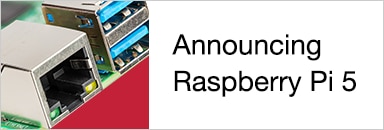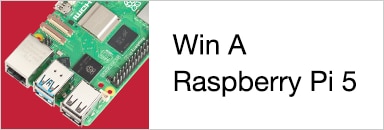Following the recent launch of BitScope Blade and the case studies about the weather station in Nepal and the interactive Theremin exhibit at MAAS we received a lot of questions about which Blade is best for what purpose. Read on to learn why Blade comes in three editions and how you can best make use of them.
BitScope Blade Reloaded is our computing infrastructure platform for Raspberry Pi.
It is available in three editions; UnoUno, DuoDuo and QuattroQuattro which power and mount one, two or four Raspberry Pi and support the use of Raspberry Pi and BitScope accessories including HATs, displays, cameras and other devices. Blades may be used stand-alone or combined to build large computing platforms.
In this post we'll focus on some stand-alone examples.
So what does Blade do ?
BitScope Blade solves the “power and mounting problem” using Raspberry Pi.
A common problem when using single board computers like Raspberry Pi is how to power it reliably. The other common issue is how to mount it robustly.
These problems become more challenging when peripherals and expansion hardware such as HATs and USB are used and/or when using more than one Raspberry Pi at once.
BitScope Blade solves these problems making it easy to build small stand-alone servers, routers and workstations up to full sized compute clusters, private clouds, industrial IoT, edge and fog computing platforms, industrial data acquisition and control systems. HATs and almost any other peripheral compatible with Raspberry Pi may be used with BitScope Blade.
Blade Uno, the ideal "motherboard" for Raspberry Pi & HAT
The simplest Blade application is a motherboard for Raspberry Pi, a HAT and optionally one or more USB devices.
For example, this BitScope Blade UnoBitScope Blade Uno is configured with Raspberry PiRaspberry Pi, Pimoroni Explorer HAT and BitScope MicroBitScope Micro to build a complete self-contained mixed signal test and measurement system.
Blade Uno provides power and mounts the Raspberry Pi, the HAT and BitScope. It accepts any source of power from 9V to 48V (so long as it’s 10W or more) with power connected via the 2.1mm socket or via the Blade tabs.
Additional accessories such as Raspberry Pi Display and one HUB Expansion Card or other SPI, I2C Serial or GPIO connected devices can also be used. The entire assembly can be mounted via the Blade's M3 mounting tabs or simply sat on a flat surface using the stand-offs.
The Raspberry Pi network port is available for network connections and/or a monitor (via HDMI), keyboard and mouse (via USB) and audio (via the 3.5mm). Full access to all the Raspberry Pi I/O is avaiable via the Explorer HAT. A "hat tip" to Pimoroni for the exceptionally handy Explorer HAT! We use this setup to help teach new users about logic protocols with BitScope Logic for BitScope Micro 
Blade Duo, the ideal platform for tiny redundant "micro-servers".
For example, this Blade Duo mounts a pair of Raspberry Pi 3 and WDLabs’ PiDrive mounted on the back.
The PiDrive is perfect for this (see our earlier post about building servers with Raspberry Pi). The PiDrive is powered via a Raspberry Pi and Blade Duo ensures there is plenty of power to drive it.
Blade Duo has the same HUB Expansion and I/O as Blade Uno and it offers auxiliary power connectors for external devices underneath each Raspberry Pi.
Using the Raspberry Pi 3 built-in WiFi the pair of Raspberry Pi can be networked to each other and/or a connected network switch or WiFi access point to configure them as a pair of servers or a router and server pair. The range of applications is huge, essentially anything you can think of using a pair of Raspberry Pi, e.g. UTM gateways, WiFi access points, VPN IPSec routers etc.
Blade Quattro, the industrial cluster platform for Raspberry Pi
A more sophisticated application for BitScope Blade, using Quattro, is a four node compute cluster.
Blade Quattro extends Blade Duo to power and mount up to four Raspberry Pi. Compute cluster applications such as a small private clouds, a build or render farms, web CMS any many other multi- node applications compatible with Raspberry Pi can be used.
Multiple Blades (of any edition) can be used to build very large compute clusters and a range of rack mount solutions are available to enable to physical construction, commissioning and deployment of large cluster computing systems of up to hundreds of nodes. For one excellent example of a small cluster built with Blade Quattro, check out Andy Clark's recent series about his Blender Render Farm.
In future posts we'll describe cluster computing examples ranging from 2 nodes to 200 that can be built with BitScope Blade Quattro, Duo and Uno. We'll also publish details of some software solutions such as Docker and explain some of our own tools designed to make Raspberry Pi programming and cluster management with Blade easy.
We designed BitScope Blade to unlock the huge potential of Raspberry Pi for use in industrial applications because nothing beats Raspberry Pi on price/performance, availability and viable software solutions.
We look forward to seeing what applications you decide to build with Blade!
There's more information across the element14 Community about Blade.
Post reprinted with permission from the BitScope Blog.













Top Comments